|
|
|
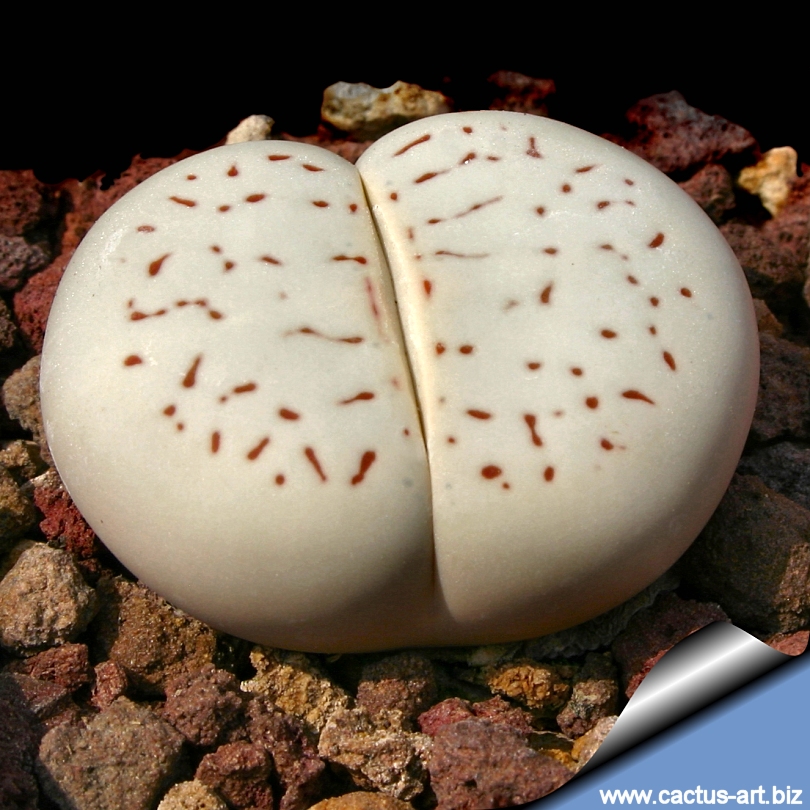
Dinteranthus vanzylii
It is chalky
white to clear pastel or greyish with irregular red or brownish markings
and dots similar to that of a lithops. Its sunken growth form is
understood as a development parallel to that in Lithops.
|
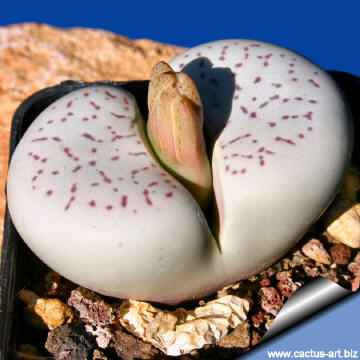 |
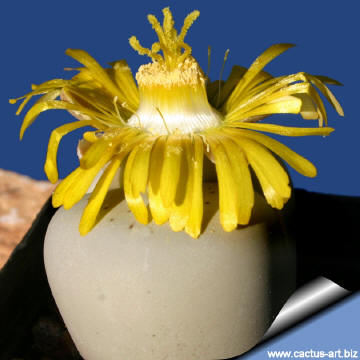 |
|
. |
|
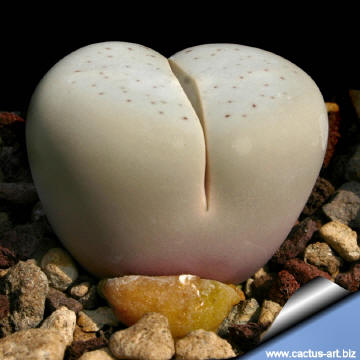 |
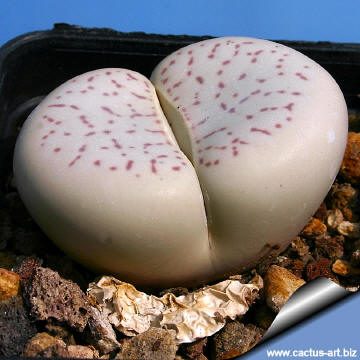 |
|
. |
|
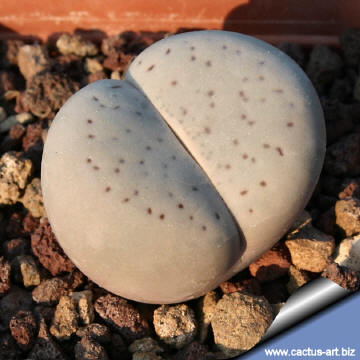 |
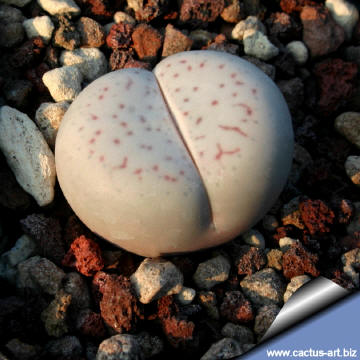 |
|
Advertising
|
|
|
|
Family: Mesebrianthemaceae (Aizoaceae)
Scientific name: Dinteranthus
vanzylii (L. Bol.) Schwantes
In: NCSJ 2:1951
Origin: Cape province, South
Africa.
Habitat:
The
grow in fine sand and
gravel among quartz stones, in a very dry area with prevalent rain in
March. They both
in colour and shape, resemble the stones and pebbles found in their
natural habitat. The form and colour of the
Dinteranthus
have developed in order to allow them to live in the harsh conditions of
their natural environment where they are able to stand extended periods
of drought.
Common English Names include: Stone plant, Green stone
plant, Living stone.
Synonyms:
- Dinteranthus
vanzylii L.Bolus
In: SAG 177, 1932
- Dinteranthus
vanzylii forma lineatus H. Jacobsen
In: Jacobsen & Rowley 81, 1955
- Dinteranthus
vanzylii var. lineatus (H.Jacobsen) H. Jacobsen 1970
Etymology: The genus has been
named after K. Dinter 1868-1945, German Government botanist
working in Namibia 1897-1935.
The species has been
named after Gert H. van Zijl Post Master at Pofadder, Northern
cape. R.S.A.
|
|
Description:
Dinteranthus vanzylii is an intriguing solitary or clumping
plant with attractive bodies and flowers that is very similar to Lithops
in shape and colours but with no apparent dormant period. Its sunken
growth form is understood as a development parallel to that in Lithops.
The other species of Dinteranthus grows above ground.
Body: The body is formed by two succulent leaves almost fully
united, up to 4 cm tall and is sunken in the ground for most of the leaf
length. The leaf pair forming a cone or a funnel with the leaf tips
broad, flat, but sometime with a thin horny keel near the fissure. It is
chalky white to clear paste or greyish with irregular red or brownish
markings and dots similar to that of a lithops. The intensity of marking
varies greatly from plant to plant and comprises both completely chalky
white plant without any marking and plant with distinct brown markings
and lines.
Roots: Thickened tap-root.
Flower: Solitary, bright yellow to orange, 30 - 40 mm in
diameter and bractless.
Fruit: The seed pod is 8 - 10 locular
The genus Dinteranthus
is closely related to Lithops. They are a group of
stemless succulents from the Cape Province in South Africa.
|
|
|
|
Cultivation: Dinteranthus vanzylii are summer growing species
with dry rest period over winter
but they do not shows an
apparent dormant season like Lithops. Easy to
grow they need a very open mineral, fast draining mix with little
compost and a high degree of grit, coarse sand, small lava gravel or
pebbles. Give them the maximum amount of light you are able to give
them, but care should be taken about exposing them to the full blast of
the sun rays in summer (The
only exception to this is seedlings in their first year that enjoy a
shades place) . Such tiny plants can easily
get scorched or broiled and their appearance spoiled (this may not
matter in the wild, where the Dinteranthus have probably
shrunk into the ground and becomes covered with sands).
The basic cultivation routine is: Gives some water all year, more in
Spring and again in autumn. Keep rather dry during coldest winter month
and start watering regularly after the old leaves completely dry.
(Usually late March or Early April) Water freely during the growing
season, soak the compost fully but allow it to dry out between
waterings. Some growers fertilize frequently, some hardly ever. Nearly
all problems occur as a result of overwatering and poor ventilation
especially when weather conditions are dull and cool or very humid. If
too much water is supplied the plants will grow out of character, bloat,
split and rot. Keep them in small pots as solitary clumps or as colonies
in large, shallow terracotta seed pans.
When in doubt DON'T
WATER. Where the resting season is in the winter and central heating
gives very dry air in the home, give a light top spray once a week to
simulate the desert dew and prevent excessive dehydration. Overwinter
them preferably not below 5° C (but they endure some freeze if very
dry).
Propagation: From seed
(very small) or by dividing older clumps. Slow growing for a mesemb.
Remarks: The strange
appearance of Dinteranthus have made them very popular in
succulent collections. They are similar
in habit to Lithops but grows above ground (only D. vanzily is
partly subterranean like Lithops with the
top of each leaf tip exposed above soil). They are also called
mimicry plants as they show a
striking similarity to their background rocks and are difficult to
detect when not in flower. The Dinteranthus have a pebbly
look and are commonly known as pebble
plants or living stones; each species is associated with one particular
type of rock formation and occurs nowhere else. This camouflage also
reduces the need for chemical defences against herbivores.

 |
|